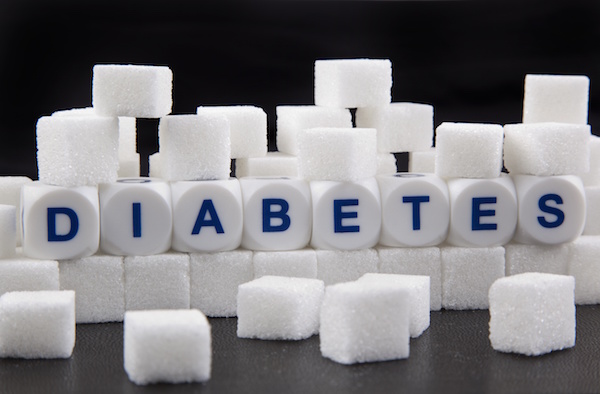
WEDNESDAY, Nov. 14 (HealthDay News) — Before her 12-year-old daughter was diagnosed with type 1 diabetes a year ago, Michelle Moriarty knew very little about the blood sugar disease other than that there was more than one type of diabetes and one kind of diabetes required shots.
While her daughter was in the hospital recovering from a life-threatening condition called diabetic ketoacidosis, Moriarty was given a crash course in managing type 1 diabetes, the type that can only be managed with insulin injections. Moriarty now knows more than she ever wanted to about living with diabetes.
Nov. 14 is World Diabetes Day, sponsored by the International Diabetes Federation (IDF). The hope is that by raising awareness and educating people about diabetes, people that have a chance to prevent type 2 and gestational diabetes (type 1 isn’t currently preventable) will be able to do so.
As many as 366 million people have diabetes worldwide, according to the IDF. That number is predicted to rise to 552 million by 2030. Most of those people have type 2 diabetes, and many don’t even know they have the disease. In the United States, almost 26 million people have diabetes, according to the American Diabetes Association (ADA).
There are three main types of diabetes: type 1, type 2 and gestational diabetes, which occurs during pregnancy, according to Dr. Vivian Fonseca, president of medicine and science for the ADA.
Type 1: Although the least common type of diabetes, affecting about 5 percent to 10 percent of those who have diabetes, type 1 patients are often the sickest when they’re diagnosed, according to Dr. Joel Zonszein, director of the clinical diabetes center at Montefiore Medical Center in New York City. Type 1 is believed to occur when the body’s immune system mistakenly attacks the insulin-producing cells in the pancreas, destroying them. Insulin is a hormone that’s required to properly process the carbohydrates — including sugar — found in food. People with type 1 diabetes must replace the lost insulin, either through insulin injections or by using an insulin pump to deliver insulin under the skin. People with type 1 disease must also check their blood sugar levels frequently throughout the day to ensure that they haven’t given themselves too much or too little insulin. There’s no known way to prevent type 1 diabetes, and the cause of this type of diabetes hasn’t been linked to diet.
Moriarty said what she’d really like people to know about her daughter’s diabetes is “that there is no cure. She won’t grow out of it. She might not look sick, but her body is constantly riding a roller coaster with her blood sugar numbers, and it can make her feel sick or confused or unable to concentrate or grumpy.”
Type 2: Most people are familiar with this type of diabetes. It used to be called adult-onset, though more and more children are being diagnosed with type 2 disease, according to the ADA. Type 2 diabetes occurs when the body becomes insulin-resistant. That means the body doesn’t use insulin efficiently, and blood sugar levels rise. As blood sugar levels rise, the pancreas produces more insulin to try to compensate. After years of this vicious cycle, the pancreas eventually becomes too tired to make enough insulin. Although a sedentary lifestyle and being overweight have been linked to the development of type 2 diabetes, not everyone who gets this disease is overweight.
Type 2 diabetes can be managed with lifestyle changes, such as eating healthy, losing weight and exercising regularly, along with medications. Sometimes, people with type 2 diabetes also need to use insulin injections to help manage their diabetes.
Fonseca said that it’s likely that there is more than one kind of type 2 diabetes, but that researchers haven’t clearly identified separate types yet. “Type 2 is a very broad, all-encompassing term,” he said. For example, there’s a rare type of diabetes called maturity-onset diabetes of the young (MODY), which is quite similar to type 2, but it doesn’t respond well to the standard type 2 drug treatment, metformin. Instead, MODY responds well to a class of diabetes medications called sulfonylureas, Fonseca said.
Gestational diabetes: This type of diabetes is like type 2 diabetes, because the body becomes resistant to insulin. It generally disappears after the birth of the baby, but women who’ve had gestational diabetes have an increased risk of developing type 2 diabetes later in life, according to the IDF.
There’s also another type of diabetes, which is closely linked to type 1 diabetes, but appears to share features of both type 1 and type 2 diabetes, at least early in the disease. It’s called latent autoimmune diabetes in adults. It’s also sometimes called type 1.5. This type of diabetes tends to start off slowly, like type 2, but the antibodies associated with type 1 that are responsible for the destruction of the insulin-producing cells are present, and eventually, these people must use insulin injections, like people with type 1 disease, according to the ADA.
Type 2 and gestational diabetes are often diagnosed through a routine blood test, or through a glucose tolerance test, which involves drinking a sugary liquid and having your blood tested at regular intervals over several hours.
“The most common symptom of type 2 is no symptom at all. That’s why it’s best to check the blood sugar regularly — [at annual physicals, for example] — so that people don’t live with diabetes for many years,” said Zonszein.
Type 1 symptoms generally come on quickly, and make people so sick, it’s difficult to miss.
Symptoms of diabetes may include:
- Fatigue
- Frequent thirst
- Frequent urination
- Unintended weight loss
- Blurred vision
- Slow-healing wounds
More information
Learn more about the warning signs of diabetes from the International Diabetes Federation.

